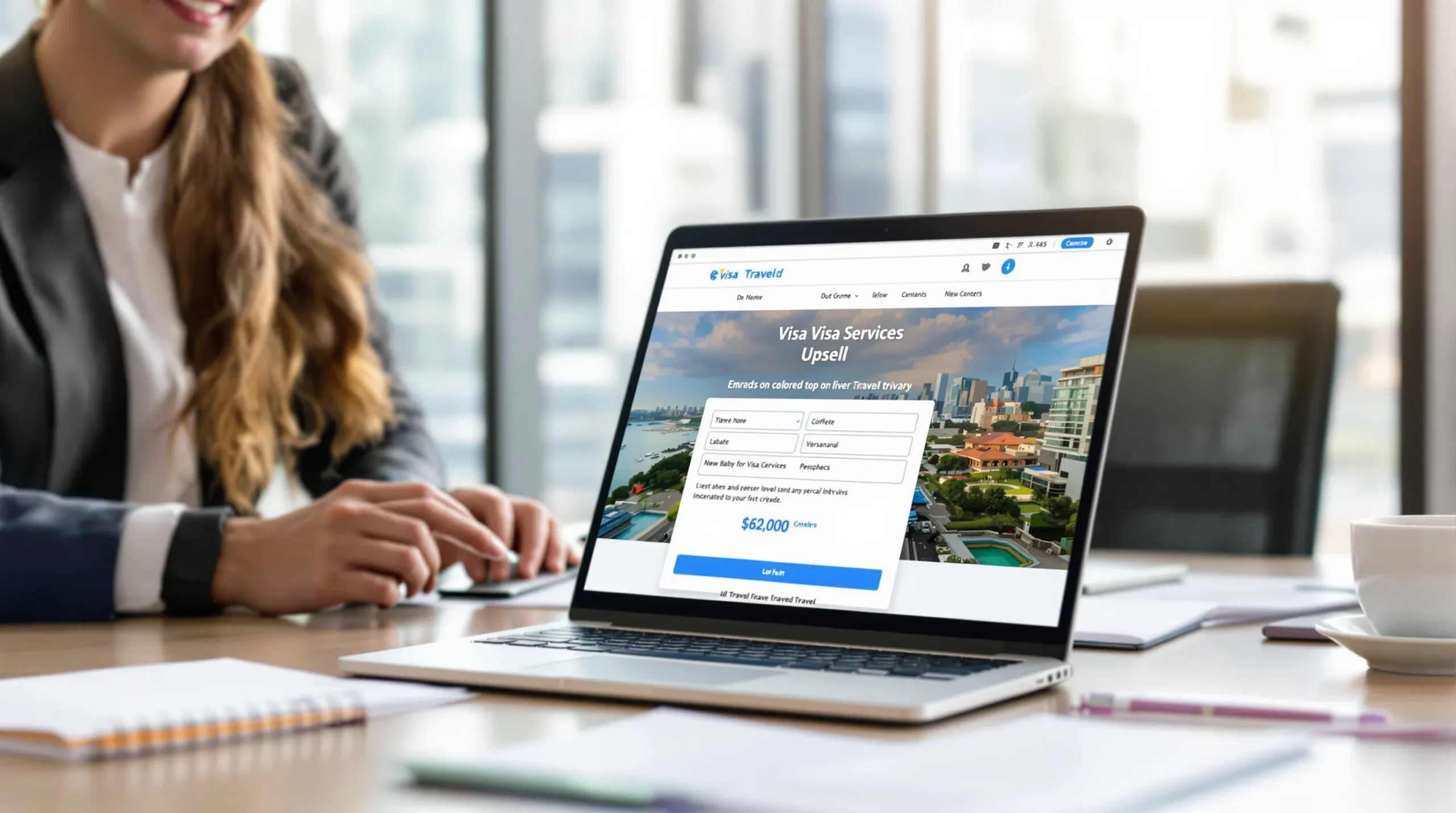7 Revenue-Sharing Models for Online Visa Processing Partners

Visa Services: A Hidden Gold Mine for Travel Brands
Ancillary revenue has become a lifeline for airlines, online travel agencies (OTAs) and even meta-search engines. According to IdeaWorksCompany’s 2024 Ancillary Revenue Yearbook, the global travel sector generated an estimated US $119 billion in add-on sales last year, up 15 percent from 2023.
Yet one of the fastest-growing contributors—online visa processing—still flies under the radar. Every time a traveler needs an entry permit, a carrier or OTA that guides the application can capture extra income while improving trip certainty for the customer. The key question is: how should that extra income be split between the travel brand and the visa technology provider?
Below we break down seven proven revenue-sharing models you can adopt when partnering with an eVisa platform such as SimpleVisa. We explain how each model works, typical margins, and the strategic fit for different business types.
1. Flat Referral Fee Per Approved Application
How it works:
- You embed a referral link or API widget in the booking flow.
- For every completed and approved application, the visa provider pays your company a fixed dollar amount (e.g., US $7 per traveler).
Why choose it:
- Predictable earnings simplify budgeting.
- Ideal for low-volume partners testing customer interest.
Watch out for:
- No upside if your average basket value is high.
- Must negotiate clear approval criteria to avoid disputes.
Example scenario: A regional airline flying to India adds a post-booking email with a visa referral. With 6,000 approvals per quarter at US $7 each, the airline makes US $42,000 incremental revenue without touching its checkout code.
2. Percentage-Based Commission on Service Fees
How it works:
- The visa provider sets a public service fee (e.g., US $35).
- Your brand earns an agreed share—commonly 20 to 35 percent—for each successful transaction.
Why choose it:
- Earnings scale automatically as volumes or prices rise.
- Commission can be reconciled alongside other affiliate income.
Watch out for:
- Lower transparency for end users if markups are high.
- Requires robust tracking to handle refunds or rejections.
Pro tip: Use UTM parameters passed via the SimpleVisa API (see How eVisa APIs work) to ensure every conversion is attributed correctly.
3. Tiered Commission Based on Monthly Volume
How it works:
- Base commission starts low (e.g., 15 percent).
- Higher volume unlocks bigger shares—say, 25 percent once you exceed 5,000 monthly applications and 35 percent beyond 20,000.
Why choose it:
- Incentivizes marketing teams to actively promote the service.
- Aligns the provider’s margin protection with your growth.
Watch out for:
- Monthly reconciliation can get complex; insist on transparent dashboards.
- Decide whether chargebacks reduce current or next-month totals.
4. Dynamic Pricing Mark-Up
How it works:
- The provider charges a wholesale fee (e.g., US $20).
- You are free to set the retail price on your site or app.
- The margin between retail and wholesale is yours to keep.
Why choose it:
- Maximum flexibility to run promos or A/B test prices.
- Works well for premium brands bundling visa help with concierge services.
Watch out for:
- Regulatory restrictions in some jurisdictions on reselling government services.
- Over-pricing can hurt conversion and NPS.

5. Subscription Bundle or Loyalty Tier Perk
How it works:
- Visa processing is included in a paid membership (e.g., airline co-brand credit card) or specific loyalty tier.
- The travel brand pays the provider a discounted rate per processed visa, often invoiced monthly.
Why choose it:
- Enhances perceived value of your subscription program.
- Reduces friction for frequent travelers who dread repeat paperwork.
Watch out for:
- Need accurate forecasting so that bundled cost does not erode margin.
- Communicate geographic limits (e.g., “covers 80 destinations”).
6. White-Label SaaS License + Revenue Share
How it works:
- You license the provider’s full white-label portal under your branding.
- Pay a modest platform fee (flat or per active user) and keep a pre-negotiated share of each application fee.
Why choose it:
- Control the end-to-end user experience without building tech in-house.
- SaaS fee aligns both parties on uptime and feature roadmaps.
Watch out for:
- Up-front integration work (although SimpleVisa offers no-code launch within a week).
- Define data ownership and export clauses before signing.

7. Data Monetization and Cross-Sell Revenue Share
How it works:
- With traveler consent, anonymized application data (e.g., destination trends, lead times) is aggregated.
- Insights are packaged for tourism boards or travel insurers.
- Net proceeds are shared between the visa provider and the travel brand.
Why choose it:
- Unlocks an entirely new revenue stream beyond transaction fees.
- Valuable for meta-search engines sitting on massive search traffic but thin booking margins.
Watch out for:
- Must comply with GDPR, CCPA and any destination-specific privacy laws.
- Requires robust opt-in flows and data governance audits.
How to Select the Right Model
- Map your traveler journey: Pre-booking banners may favor referral fees, whereas in-path upsells suit dynamic markups.
- Assess volume predictability: If traffic spikes around holidays, tiered or percentage models hedge risk.
- Evaluate tech resources: White-label SaaS is fastest for lean teams; API markup is optimal if you control checkout code.
- Consider regulatory posture: Some markets cap visa surcharges—flat fees may be safer.
- Plan for reporting: Agree on dashboards, settlement currency and dispute windows before launch.
Integration Snapshot with SimpleVisa
- API: Embed visa eligibility checks directly into search results; usually 3–5 developer days.
- No-code widget: Copy-paste two lines of JavaScript; go live in a morning.
- White-label app: Brandable portal hosted on SimpleVisa’s cloud, connected to your CRM via webhook.
To see a live demo, explore our Visa Solution Streamline Travel case study.
Frequently Asked Questions (FAQ)
How much ancillary revenue can I expect from visa services?
It varies by route mix and marketing placement. Partners integrating visas into their booking flow typically see US $3–$12 incremental profit per long-haul passenger.
What happens if an application is rejected?
Most models exclude rejections from payout, but SimpleVisa can offer partial credit or free re-submission tiers—negotiate this up front.
Can we offer multiple models at once?
Yes. Some OTAs use a flat referral fee for low-value destinations and a markup model for complex, high-margin countries.
Will visa upsells slow my checkout?
Not with asynchronous eligibility calls. Our average API response time is 200 ms, and the widget loads after critical payment scripts.
Ready to Turn Compliance Into Profit?
Whether you prefer a zero-risk referral fee or a high-touch white-label platform, SimpleVisa’s flexible partnership plans help you monetize border compliance while delivering a smoother journey for your customers.
Book a 20-minute strategy call and start generating new revenue this quarter:
Schedule My Demo 🚀